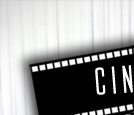Rating
-

Horror / Crime
(US); 1972; Rated R; 91 Minutes
Cast
David Hess: Krug
Ludy Gratham: Phyllis
Sandra Cassell: Mari
Marc Sheffler: Junior
Jeramie Rain: Sadie
Fred Lincoln: Weasel
Gaylord St. James: Dr. Collingwood
Cynthia Carr: Mrs. Collingwood
Produced by Sean
S. Cunningham; Directed and Screenwritten by Wes
Craven
Review Uploaded
8/16/98 |
Written
by DAVID KEYES Picture
it: two girls (one from the country and one from the city)
go into town one night for a concert. It happens to be the
same night when three vicious killers escape prison and
head into town. What do you think are the odds for these
teenage girls to get caught in their path?
With
Wes Craven's "Last House On The Left," the odds are anything
but slim. This is an artistically manipulative movie about
the fears and aggressions people can go through when caught
up in the wrong crowd. Like "The Exorcist," "Last House
On The Left" exploits our deepest fears, so violently and
repugnantly that afterwards we are forced to watch a movie
more cheerful so we don't have a feeling of sickness flowing
through us.
It
stars Sandra Cassel as a teenage girl named Mari, who one
night goes into town for a Bloodlust concert with her good
friend Phyllis, played by Ludy Gratham. The night they enter
town happens to be the same night when escaped murder convicts
enter the vicinity, and before long, they find themselves
in their demented possessions.
These
four pigs kidnap the two girls, and lock them into the trunk
as they are traveling a road up in the woods somewhere.
Their car happens to break down right in front of Mari's
house, and when they unlock the trunk, one of the girls
bites a killer on the hand, thus setting off criminal behavior.
The
killers drag the two, frightened girls into nearby woods,
where they force them to perform lewd acts that cannot even
be listed here. When Phyllis tries to escape, they viscously
rip her open with a knife, tearing her from limb to limb,
leaving her corpse to rot just off of the road.
Mari
then tries to make a run for it while they are away, but
when she is caught, they rape her, shoot her, and toss her
body into the river.
After
the four clean up, they seek shelter at the nearby house
of Mari's parents, who are unaware that these are the sadistic
people who killed their daughter and her friend.
During
their stay, Mari's mother, played by Cynthia Carr, discovers
a chain around one of the killer's necks (his name is Junior,
by the way), and it happens to be the same chain that Mari's
parents gave to her the night before.
You
see, while the gang was killing Phyllis somewhere in the
woods, Junior stayed behind to watch Mari, and she gave
her chain to Junior in hope to earn his respect.
Junior
happens to be the son of Krug, the leader of the gang. He
was raised on Krug's drugs and alcohol, which brought up
a kid just as sick as his father. Yet, He still had enough
sense to know what was wrong and what was right, and he
knew what the gang was doing to the girls wasn't right.
Staying at When sleeping in Mari's house, he has dreams,
watching the two girls getting killed, trying to stop the
gang from torturing them. A few times, he was found screaming
"I'm sorry!"
After
Mari's mother realizes that they are responsible for her
daughters death, her and her husband, Mari's father, played
by Gaylord St. James, plot the ultimate massacre on these
four, ruthless murderers, who are so psycho that I'm not
even sure they really did exist.
You
see, in the first shot of the film, a note comes up and
tells the audience that the film is based on fact, and that
only names have been changed to protect the innocent. I
don't know if this is true, but if it is, the film makes
logical sense of it; instead of containing just a series
of sick and repugnant scenes of gratuitousness, the film
is nearly told through the killers point of view. They are
indeed sicko's, from top to bottom, and we believe it, because
every second on the screen, they demonstrate how mentally
disgusting a true killer can be.
Craven
doesn't disappoint us, even with his obvious sense of a
low budget. The film has severe technical problems, which
are obvious from the way the camera swoops down on characters.
This isn't a problem, though--it gives us a new feeling
for the film, because it is unlike anything we've seen in
horror. Perhaps if more horror films like this were made
on very low budgets, with some sort of technical imbalance,
they would be masterpieces.
That
is exactly was "Last House On The Left" is: a cinematic
masterpiece; an astonishing achievement; a landmark of horror
that reaches into our deepest fears. Craven's recent successful
films have this movie to thank.
©
1998, David Keyes, Cinemaphile.org.
Please e-mail the author here
if the above review contains any spelling or grammar mistakes. |





